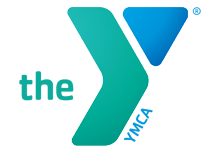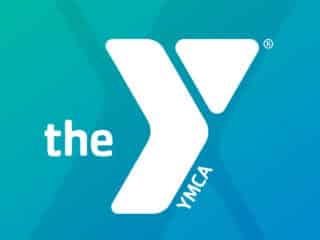Aquatics & Swim
AQUATICS & SWIM PROGRAMS

Youth Swim Lessons
There are three general categories of Y Swim Lessons:
Swim Starters develops water enrichment and aquatic readiness in children ages six months to three years. This category focuses on developing swim readiness skills through fun and confidence-building experiences. Parents also learn how to supervise children in the water, how to prevent accidents and how to plan for emergencies.
Swim Basics develops personal water safety and basic swimming skills in students of all ages. Swimmers develop a high level of comfort in the water by practicing safe water habits, engaging in underwater exploration, and learning how to swim to safety and exit if they fall into a body of water.
Swim Strokes introduces and refines stroke technique in older students (school age, teens, and adults). Having mastered the fundamentals, students learn additional water safety skills and build stroke technique, developing skills that prevent chronic disease, increase social-emotional and cognitive well-being and foster a lifetime of physical activity.

Lifeguard Certification
This training course is designed to provide the knowledge and certification needed to become a professional lifeguard.
Certifications Awarded:
- American Safety and Health Institute’s (ASHI) courses
- CPR Pro (BLS) for the Professional Rescuer
- Basic First Aid for the Community
- Emergency Oxygen Administration
The course presents information on the skills and knowledge lifeguards need in pool, lake, river, surf, and waterpark environments and offers up-to-date information on how to lifeguard by anticipating and preventing problems before they occur and by taking action to help those in danger when necessary.
You’ll learn safety skills, accident prevention, scanning, guarding techniques, emergency systems, rescue skills, first aid in aquatic environments, spinal injury management, open water dangers, legal responsibilities, pool maintenance basics, and information on how to get a job as a lifeguard. Students must pass the physical skills test prior to the class and must be 16 years of age by the last day of the scheduled class.
Keeping You Connected: SwimWins

Track your child’s swim lesson progress in real with time SwimWins! Download today, available on the Apple Store and Google Play. With this app you can:
Progress Reports
Communication
Instant Alerts
Schedules
Water Exercise Program
Program includes water aerobics, water Zumba and water exercise for arthritis. Excellent for all abilities without putting excess strain on joints. Water is maintained at a comfortable 83 to 84 degrees. Pool rentals and/or Group Swim Lessons Call the aquatics director at your Y.
Bayside Family YMCA 401.245.2444
Cranston YMCA 401.943.0444
East Side YMCA 401.521.0155
Kent County YMCA 401.828.0130
Newman YMCA 508.336.7103
South County YMCA 401.783.3900
Teen & Adult Beginner/Intermediate
This class teaches basic swimming skills such as the crawl stroke, breathing techniques, and floating to help gain confidence in the water. Our trained instructors will individualize the class to meet personal needs.
Private & Semi-Private Lessons
A great option for those who can’t find a lesson time to t their schedule, and want to personalize a swim class for their child and a group of friends.
Adult Lap & Family/Community Swim
Extensive times are made available for adult lap and family swims. We also offer open recreational swim times free to our community members.
Masters Swim
This program for adults is taught by certified master swim coaches. The weekly class focuses on stroke techniques, drills, and interval training. Each workout is modified to a participant’s skill level. For more information click here or call the aquatics director at your local Y.
SWIM TEAM

Our Y swim teams produce champions! Competitions are held at southeastern New England YMCAs as well as nationally. Our competitive swim teams strive to provide an opportunity for young people to participate in competitive swimming under conditions that will foster aquatic ability, team spirit, and sportsmanship. We encourage personal goal setting, self-discipline, achievement, commitment, and parental involvement. Our coaches provide the professional expertise to help develop well-rounded ability in all strokes. To join a Y swim team, swimmers must be able to swim one pool length on both front and back. For more information on swim teams call your local branch and ask for the aquatics director.
Bayside YMCA – 401-245-2444
Cranston YMCA – 401-943-0444
East Side YMCA – 401-521-0155
Kent County YMCA – 401-828-0130
Newman YMCA – 508-336-7103
South County YMCA – 401-783-3900
POOL & WATERFRONT RULES DURING SEVERE WEATHER
At the YMCA of Greater Providence, swimming is serious fun. So is safety! That is why we want to remind Members, Campers and Guests of our indoor and outdoor pool, waterfront and spray park severe weather policies. YMCA of the USA and the National Lightning and Safety Institute recommend that both outdoor and indoor pools, as well as any waterfront areas, be cleared during a lightning and thunderstorm. We follow the 30-minute rule at all YMCA of Greater Providence Branch locations.
That means all Y pools (indoor & outdoor) as well as our Camp Waterfronts (Spray Park & Ponds) close for 30 minutes after the last clap of thunder. Members and guests must move off the pool deck, beach area or spray park to wait out the delay.
Members often ask why we close our indoor pools during a storm and the answer is, water is an excellent conductor of electricity. Just because a pool is surrounded by a structure does not make it safe during a storm.
National Weather Service urges: ‘When thunder roars, go indoors!’
Lightning Facts:
- Lightning kills more people in the U.S. than hurricanes and tornados combined.
- The average storm is 6 – 10 miles wide and moves at 25 MPH.
- 13 percent of all lightning incidents involve swimming, boating or fishing.
- Thunder is usually heard up to 12 miles from a lightning strike. In other words, if you can hear thunder, you’re in danger of lightning.
- Lightning strikes can reach up to 10 miles.





